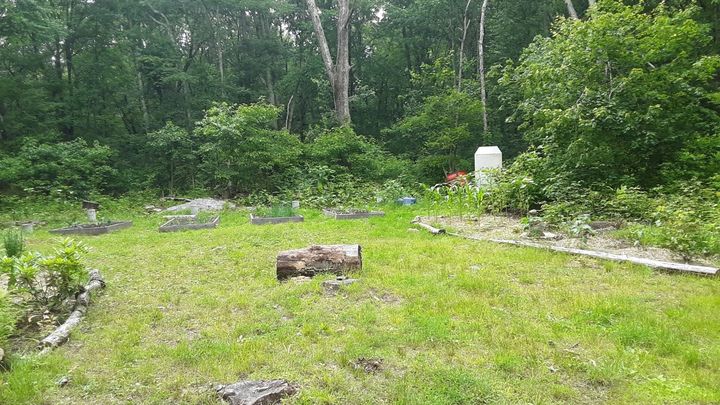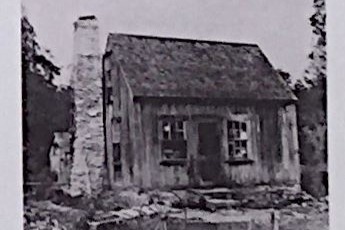
The Eastern Pequot Tribal Nation Community Garden
Donation protected
The Oskoosooduck(Mary Momoho) Community Garden
Help support food sovereignty and food security through your generous donation. Each dollar can help establish a permanent sustainable agricultural ecosystem, which ultimately can help strengthen neighboring native and non native communities.

History
In 1678 the Connecticut Court appointed a committee to find a “suitable tract of land for Momoho and the Pequots with him.” By 1683 a plot of 280 acres was deeded over to the tribe, and they have resided there ever since, the land is held by the State in trust for the tribe’s benefit.
The tribal nation has found its final home after the Pequot War of 1637. Located south of Lantern Hill, nestled east along Long Pond in North Stonington, the tribe has maintained self-sufficiency through working with the land.
Like many other tribes in the country, the Eastern Pequots were forced onto land and needed to learn new ways to adapt to colonization. Traditionally Pequots would reside along the coastal shores in the summer and retreated inland for the winter. Because shellfish was a big portion of a Pequot’s diet, a lack of access to traditional locations forced a shift in what would be used for nutrients throughout the year.

The Eastern Pequot’s Chief or Sachem Momoho, had a daughter named Oskoosooduck also known as Pashkhanash, Mary Ninigret, Mary Sowas, or most notably Mary Momoho (1671-1752). She was a Sunksquaw or female leader who would petition to the Connecticut Colony Courts on behalf of the tribe to protect the Eastern Pequot Reservation from encroachment by neighboring colonist.
“We suppose that there will be some pleas made that wee are almost all dead & indeed so we be but yet wee have Thirty three men yet alive which belong to Momoho besides woemen & Children…”
Reminding the courts of her political authority, Mary Momoho states how many warriors she has under her power, she was a force to be reckoned with. The reservation was protected and solidified for generations to come.
About Mary Oskoosooduck Momoho
Today
Today, the Eastern Pequot Tribal Nation resides on 224 of the 280 acres of land it was originally deeded, records from the 1800’s note it was 500 acres or larger. Agriculture and gathering has been the main source of sustenance for the tribe since it was settled long ago.
 Arrowhead Farm
Arrowhead Farm
With help from the Eastern Connecticut Community Garden Association in 2017 the tribe was able to make a return to gardening in the hopes of providing education and sustenance for those who needed it. With only 4 raised beds, and 2 additional in-ground beds, the tribe needed to expand to provide more. Because the reservation is located in New England in the Eastern Woodlands, it is important to clear trees and vegetation to provide more light and space. 4 acres of land to be cleared in the winter of 2020-21 was contracted with local forester Hull Forestry and Woodland Management services.
2 acres of space have been dedicated for our community center building to stand parallel to the community garden, construction will begin in the spring of 2021.

The other 2 acres are dedicated to the Oskoosooduck Community Garden. A 7 foot tall deer fence will enclose the 2 acres to help keep out unwanted woodland animals and protect the plants. The garden will have sections reserved for different growing objectives. A traditional eastern woodland section displaying the 3 sisters(squash, corn and beans) and tobacco for learning and ceremonial purposes, another section for community beds for each member who desires to learn how to grow and harvest.
The community bed harvest can be brought home or sold at a Eastern Pequot or local Farmers’ market. Another section will have a few cash crops, these will be larger beds with the intent to sell a bulk amount. These beds will have plants such as Hemp, Kale, Collards, and Summer Squash, very heat tolerant and nutritious plants with little to do to care for them. Smaller sections could be used for tree farming for local developments and towns. Mushroom farming is another smaller section. Because of the diverse hardwoods at the Eastern Pequot Reservation both mushroom farming and tree farming would be a viable option for a small section.
The tribe has also purchased honeybee equipment to help in the process of pollination for the community garden.

A no till method will be used to build the soil and keep ground disturbance and costs down.
By farming the land, the Eastern Pequot Tribal Nation can help provide sustenance, education, and economic benefits for its tribal members. But to get to that point of self-sufficiency it will require some help for tools, equipment, and material. The most crucial and probably costliest will be the 2-acre steel deer fence to provide protection. Fencing has been an issue for tribal members since as the tribe settled on the reservation in 1683, it is no irony why it would be so important again today.
Please consider donating to this cause. Your donation will help preserve a native tribe which fought hard to survive through first contact, colonialism, and now economic and nutritional hardship.
Help support food sovereignty and food security through your generous donation. Each dollar can help establish a permanent sustainable agricultural ecosystem, which ultimately can help strengthen neighboring native and non native communities.

History
In 1678 the Connecticut Court appointed a committee to find a “suitable tract of land for Momoho and the Pequots with him.” By 1683 a plot of 280 acres was deeded over to the tribe, and they have resided there ever since, the land is held by the State in trust for the tribe’s benefit.
The tribal nation has found its final home after the Pequot War of 1637. Located south of Lantern Hill, nestled east along Long Pond in North Stonington, the tribe has maintained self-sufficiency through working with the land.
Like many other tribes in the country, the Eastern Pequots were forced onto land and needed to learn new ways to adapt to colonization. Traditionally Pequots would reside along the coastal shores in the summer and retreated inland for the winter. Because shellfish was a big portion of a Pequot’s diet, a lack of access to traditional locations forced a shift in what would be used for nutrients throughout the year.

The Eastern Pequot’s Chief or Sachem Momoho, had a daughter named Oskoosooduck also known as Pashkhanash, Mary Ninigret, Mary Sowas, or most notably Mary Momoho (1671-1752). She was a Sunksquaw or female leader who would petition to the Connecticut Colony Courts on behalf of the tribe to protect the Eastern Pequot Reservation from encroachment by neighboring colonist.
“We suppose that there will be some pleas made that wee are almost all dead & indeed so we be but yet wee have Thirty three men yet alive which belong to Momoho besides woemen & Children…”
Reminding the courts of her political authority, Mary Momoho states how many warriors she has under her power, she was a force to be reckoned with. The reservation was protected and solidified for generations to come.
About Mary Oskoosooduck Momoho
Today
Today, the Eastern Pequot Tribal Nation resides on 224 of the 280 acres of land it was originally deeded, records from the 1800’s note it was 500 acres or larger. Agriculture and gathering has been the main source of sustenance for the tribe since it was settled long ago.
 Arrowhead Farm
Arrowhead FarmWith help from the Eastern Connecticut Community Garden Association in 2017 the tribe was able to make a return to gardening in the hopes of providing education and sustenance for those who needed it. With only 4 raised beds, and 2 additional in-ground beds, the tribe needed to expand to provide more. Because the reservation is located in New England in the Eastern Woodlands, it is important to clear trees and vegetation to provide more light and space. 4 acres of land to be cleared in the winter of 2020-21 was contracted with local forester Hull Forestry and Woodland Management services.
2 acres of space have been dedicated for our community center building to stand parallel to the community garden, construction will begin in the spring of 2021.

The other 2 acres are dedicated to the Oskoosooduck Community Garden. A 7 foot tall deer fence will enclose the 2 acres to help keep out unwanted woodland animals and protect the plants. The garden will have sections reserved for different growing objectives. A traditional eastern woodland section displaying the 3 sisters(squash, corn and beans) and tobacco for learning and ceremonial purposes, another section for community beds for each member who desires to learn how to grow and harvest.
The community bed harvest can be brought home or sold at a Eastern Pequot or local Farmers’ market. Another section will have a few cash crops, these will be larger beds with the intent to sell a bulk amount. These beds will have plants such as Hemp, Kale, Collards, and Summer Squash, very heat tolerant and nutritious plants with little to do to care for them. Smaller sections could be used for tree farming for local developments and towns. Mushroom farming is another smaller section. Because of the diverse hardwoods at the Eastern Pequot Reservation both mushroom farming and tree farming would be a viable option for a small section.
The tribe has also purchased honeybee equipment to help in the process of pollination for the community garden.

A no till method will be used to build the soil and keep ground disturbance and costs down.
By farming the land, the Eastern Pequot Tribal Nation can help provide sustenance, education, and economic benefits for its tribal members. But to get to that point of self-sufficiency it will require some help for tools, equipment, and material. The most crucial and probably costliest will be the 2-acre steel deer fence to provide protection. Fencing has been an issue for tribal members since as the tribe settled on the reservation in 1683, it is no irony why it would be so important again today.
Please consider donating to this cause. Your donation will help preserve a native tribe which fought hard to survive through first contact, colonialism, and now economic and nutritional hardship.
Organizer
Mitchel Ray
Organizer
Main Street, CT